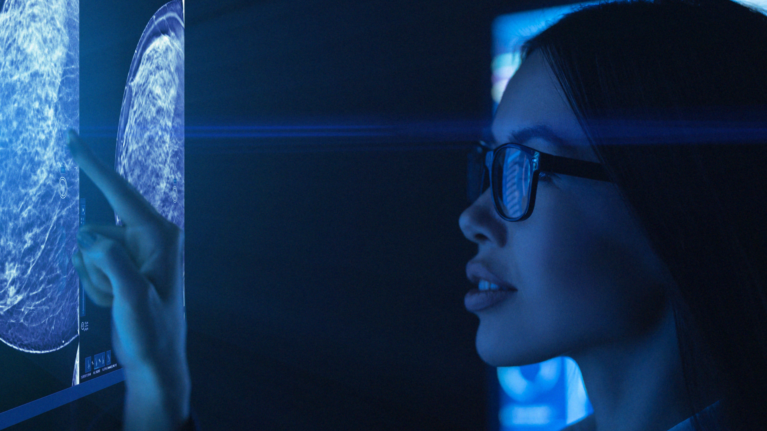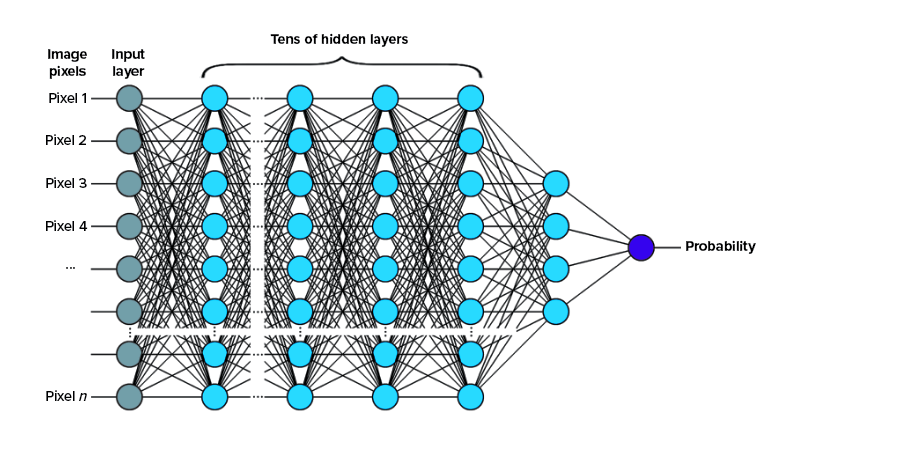How Artificial Intelligence Helps Increase Accuracy in Early Breast Cancer Detection

Artificial intelligence, or AI for short, can literally and figuratively save your life.
If you’ve ever uttered the phrase, “just Google it,” you already know how helpful it can be. It has taken over pretty much every aspect of our lives.1
Simply put, artificial intelligence is a broad term used to describe a computer or machine’s ability to mimic jobs that humans usually perform because they require intelligence and discernment.1 Can you think of the last time you went on a road trip without using a navigation map? Same. It makes life a whole lot easier.
But AI applications go beyond providing us with entertainment and utilities we can rely on. The technology is widely used in medical diagnosis and healthcare. It gives radiologists the confidence to diagnose cancer more accurately, prioritize life-threatening cases, flag acute abnormalities, help manage chronic diseases, and so much more.2
When it comes to breast cancer screening, the most common uses of AI are classic machine learning (ML) and deep learning (DL).3
Classic machine learning utilizes “manually-crafted” features to “teach” computers how to detect cancers by describing and characterizing imaging features. In contrast, deep learning uses pixels from the image. There are more inputs in DL (several thousand pixels!) and more hidden layers by which the radiologist can identify breast cancer.
Long story short: Deep learning algorithms deliver considerably superior performance compared to those using classic methods. And now we’re experiencing even bigger and better benefits of AI coupled with the advent of newer, more powerful computers.

Figure 1. Example showing how a classic AI neural network is designed.

Figure 2. Example showing a deep learning neural network.
But first, when exactly does artificial intelligence come into play in early breast cancer detection?
We all know the drill. Step one, you schedule your mammo. Check. Your breasts get examined. Check. And while you’re, of course, patiently waiting for the results, your radiologist goes through hundreds of 3D™ images to detect any areas of concern and deliver clear answers ASAP.
Interest for deep learning in radiology has increased tremendously in the past decade,4 like the award-winning Genius AI™ Detection technology,5 to help improve their diagnostic performance by identifying potential cancers in breast tomosynthesis images with high accuracy.
Basically, the Enhanced Detection system works like a spell checker, flagging areas of concern that may prioritize your exam for immediate reading—even before you leave the clinic!3 Your doctor can then assess these urgent cases and make a quicker, more informed decision—whether it’s capturing additional breast imaging or deciding there’s nothing to worry about at this time.3
Ask your healthcare practitioner if they offer Genius AI Detection. Or click the over to our pre-filtered “Enhanced Detection” facility finder to check if there’s a site in your area!”

Disclaimer: This article is for informational use only and is not intended for or implied to be a substitute for medical advice. Always seek the guidance of your health care professional for any question you may have regarding medical advice, diagnosis or treatment. Information found from public sources, such as public websites, customer feedback, company manuals and data from customers and trade shows, as of 01/03/2022. Hologic cannot verify the completeness of accuracy of this information.
-
SOM-01158
1. 8 Helpful Everyday Examples of Artificial Intelligence. Iotforall.com: https://www.iotforall.com/8-helpful-everyday-examples-of-artificial-intelligence. Accessed December 8, 2021.
2. Artificial Intelligence In Medical Diagnosis. Aidoc.com: https://www.aidoc.com/blog/artificial-intelligence-medical-diagnosis/. Accessed December 8, 2021.
3. Genius AI™ Detection for Breast Tomosynthesis. Hologic.com: https://www.hologic.com/sites/default/files/2020_12/WP-00178_Rev02_GeniusAI_Detection-white-paper-6979r10p.pdf. Accessed December 7, 2021.
4. Deep learning workflow in radiology: a primer. InsightImaging.com: https://insightsimaging.springeropen.com/articles/10.1186/s13244-019-0832-5. Accessed January 28, 2022.
5. Minnies 2021 winners show COVID-19’s long shadow. AuntMinnie.com: https://www.auntminnie.com/index.aspx?sec=ser&sub=def&pag=dis&ItemID=133841. Accessed December 22, 2021.The Genius® 3D MAMMOGRAPHY™ exam (a.k.a. Genius® exam) is acquired on the Hologic® 3D Mammography™ system and consists of a 2D and 3D™ image set, where the2D images can be either an acquired 2D image or a 2D image generated from the 3D™ image set. The Genius® exam is only available on the Hologic® 3D Mammography™ system. Please consult your physician for a complete list of benefits and risks associated with mammography.
Agile Number Hologic, 3D, 3D Mammography, Genius the Science of Sure, Genius AI Detection, and associated logos are trademarks and/or registered trademarks of Hologic, Inc. and/or its subsidiaries in the United States and/or other countries.


